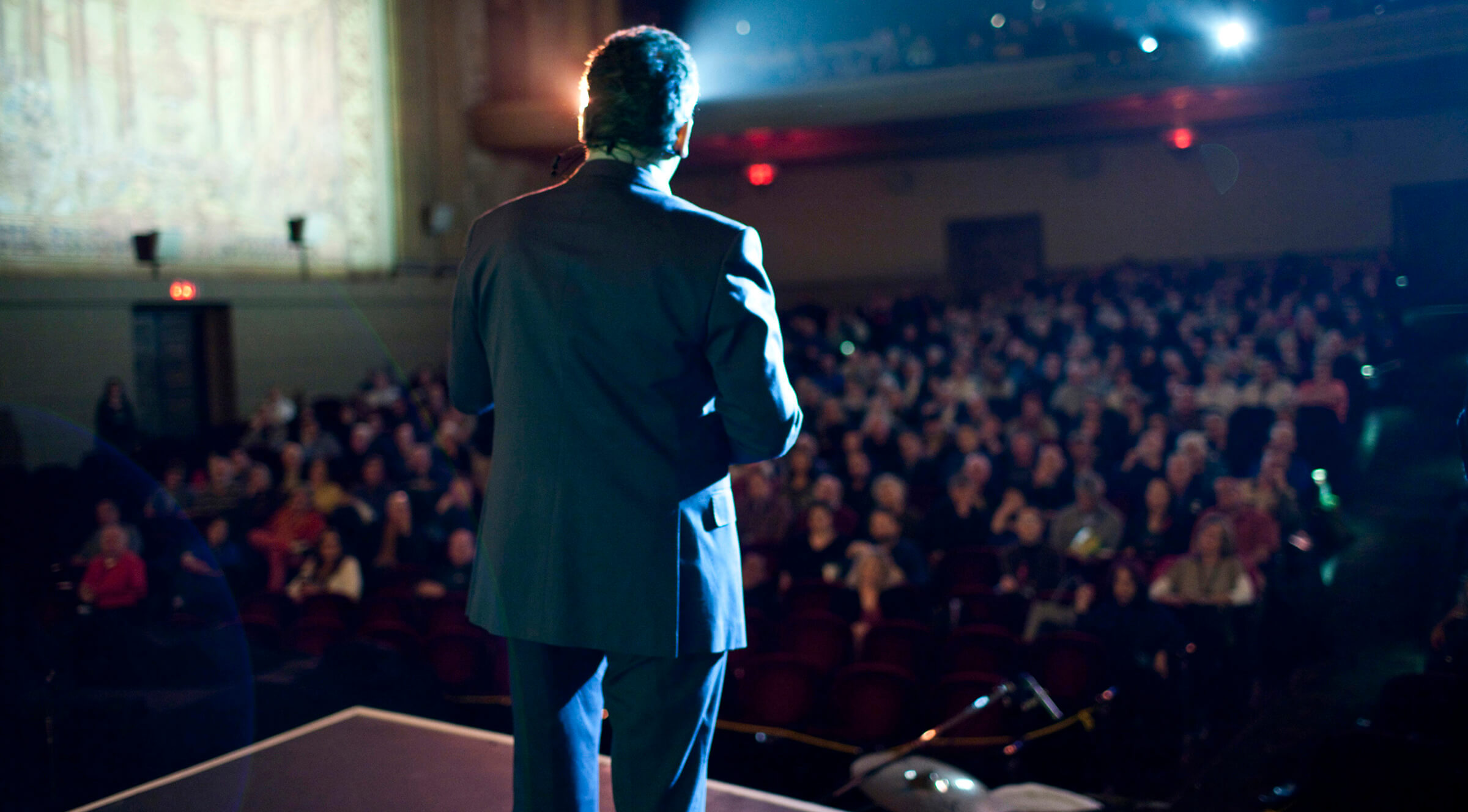2015 SF Silent Film Festival Awardee Serge Bromberg
Serge Bromberg is an impresario, a ballyhooer of cinema in the best tradition of Barnum and Bailey. Fortunate audiences around the world know him for his Retour de Flamme clip shows, during which he may burn a bit of nitrate film stock on stage and accompany some early animation on the piano while presenting his latest discoveries. Through Lobster Films, the company he founded in 1985, Bromberg restored the color to Georges Méliès’s A Trip to the Moon and, if you missed the San Francisco Silent Film Festival screening of it in 2012 you can find it on one of the DVD compilations Lobster puts out. But wait, folks, there’s more! Since the late 1980s, Bromberg has produced and hosted hundreds of hours of French television, he’s made a César-winning documentary, L’Enfer d’Henri-Georges Clouzot (codirected with Ruxandra Medrea) and, for fifteen years, he ran the festival of animation in Annecy. The future undoubtedly holds more thrilling adventures.
Given the range of your activities, how would you describe what you do?
I’m a cinevore. When I ran the film festival I tried to impart my passion for animated film to younger audiences. When I did my shows on television—at the beginning it was like twenty minutes a day, at the end it was three hours a day—it was to show animation. I’m following my passion for wonderful films and human adventures. Cinema is just an excuse for being together and sharing our passion.
How did that passion begin? I understand your father brought home a Chaplin film …
In the days of Super-8 my father brought home a print of A Night in the Show [1915] and I was hooked instantly. A few years later a cousin of mine left me alone with a Super-8 projector that was running King Kong. I was fascinated and scared at the same time. I was so scared I thought, well, King Kong comes out of the machine, so if I’m behind the machine, King Kong cannot get me.
And now you do screenings that are specifically for very young children.
We’re doing it the first Sunday of the month at the Balzac theater [in Paris]. We read the titles [out loud], so if they can’t read, it won’t be a problem. There will be piano or a band and it will be one hour long because we know that they can’t take more than one hour. Most important, when they arrive, we offer them ice cream, and probably in the future whenever they see ice cream they’ll think, ‘oh, I need to see silent film.’
Very clever.
It’s a bit unfair, because they have no defense, but it’s very efficient.
Tell me a little bit about Lobster and its involvement with Visages d’enfants.
When I created Lobster, I had already been a collector for about fifteen years, first Super-8, then 16mm, and, you know, I’m a dangerous maniac—this is a neurosis! Lobster’s main aim is to restore classic films and restore the audience for classic films. We’re basically passing our passion onto the next generation. When Lobster bought the rights to Jacques Feyder’s L’Atlantide, the owner said “there are two other films I don’t know what to do with. I would be happy if you could take care of them.” They were Visages d’enfants (1925) and Crainquebille (1922).
Who was this?
It was the grandson of Jacques Feyder. And we had no clue about Visages d’enfants. Then at Pordenone we watched the film with Antonio Coppola’s music and realized how amazing it was. But the film was not restored, so in 1993 four European archives—Netherlands Film Museum [now EYE Film Institute], the Cinémathèque française, Gosfilmofond, and the Royal Belgium Film Archive—gathered all their material to reconstruct the film. Then, in October 2014, I was told the original nitrate of Visages d’enfants was decomposing. So we put the film on the scanner, and where the original nitrate material had decomposed we used the preservation of 1993. And the film is back on its feet.
When you started Lobster Films, restoration was on film, and a telecine machine transferred film to video. Talk a little bit about the changes in the technology of restoration—we’ve gained a lot, is there anything we’ve lost?
To restore a film in the old days was basically like a Xerox copy. Whenever you copy something, you lose a little sharpness, gain a bit of contrast, and if there are scratches on the film, they are photographed—they are not scratches anymore, they are images of scratches. The digital technologies avoid a loss of quality when you transfer the image to data or when you transfer the data back to image. With digital, you can stabilize the image perfectly, you can remove defects—it’s like Photoshop, but twenty-four times a second. What we’ve lost is the [sense of] human limits—there is no human limit with digital technology; you can make the film much more perfect than it was ever conceived to be. You can put a film in 3D, why not? You can go too far. The restorer knows all the technologies, he knows everything that can be done, but what he knows best is how far you can go, and where you must stop.
Is there one film you haven’t found yet that you consider your Holy Grail?
We found it—Trip to the Moon in color. Actually for thirteen years the code name for the reconstruction of that film, because we didn’t want to make it public, was “the Grail.” But maybe another way to answer the question is to say the most interesting discovery is the next one.
Serge Bromberg received the San Francisco Silent Film Festival Award at the screening of the restored Visages d’enfants on May 30, 2015

